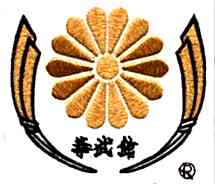

|
|
|
|
TAISHI BODHIDHARMA All Karate styles have origins dating back in time to the 6th century. Granted, there were self defense methods that date further back than the Greeks in 327 B.C., but it wasn't until around 525 AD that the earliest precepts of Karate can be first seen. Born an Indian Prince of the royal family, Taishi Bodhidharma was taught the best fighting arts of weapons and hand-to-hand combat of that day. Unsatisfied with his future, young Bodhidharma broke with India's caste system and began to study Zen Buddhism. After mastering this new concept, he left India on a journey across the Himalayans into China. Being the first person to attempt to introduce the art of Zen in China he was requested an audience with the Emperor Wu. Although the Emperor was interested in the Zen teachings, he didn't have the time or patience to undertake the studies, so Bodhidharma continued onwards to Northern China where he came across a small temple called Shaolin (small forest temple). Here he began to teach the monks the concepts of Zen, but they were unable to withstand the rigorous demands of meditation and they were easy targets of the bandits who often came to rob the monks. Bodhidharma developed a new set of exercises called I-Chin or San-Chin meaning "three conflicts" which are physical, mental, and spiritual. Practicing these exercises daily, the monks soon developed great stamina and became known as the most formidable fighters in China. After Bodhidharma died, the original 18 exercises were almost lost until a monk by the name of Dot Mor left the temple and taught a few followers the lessons he learned in Shaolin. He increased the original 18 exercises to 26 and at the same time watched the ways animals protected themselves and increased movements to a complete 50. This art became known as Chinese Temple Boxing, or Kung-Fu/Gung-Fu and later progressed to Chinese kempo or tode.
|
|
|
Copyright © 1988 - 2008 |